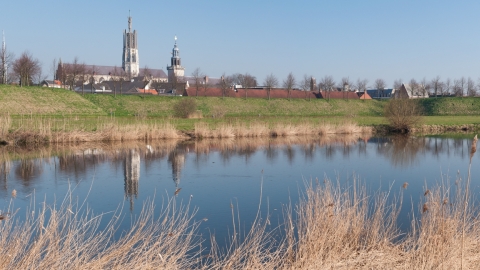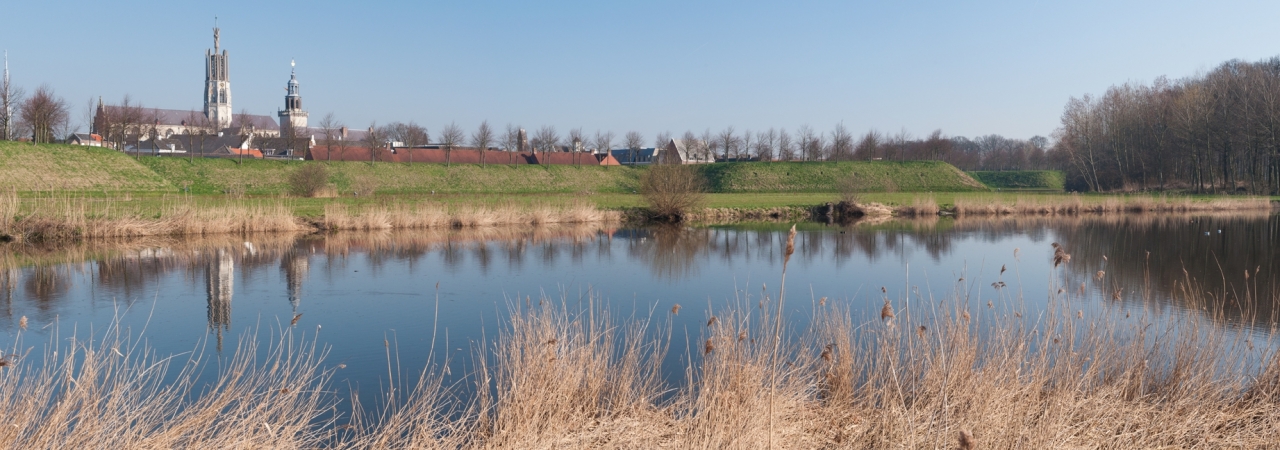In the second half of the 15th century, the defence works of Hulst were considerably strengthened. Gatehouses were built and the earthen embankment was (partially?) replaced by a stone wall. After the outbreak of the Revolt (against Spain), the fortifications were improved on the orders of the Spanish authorities. In September 1591, Prince Maurits succeeded in defeating the Spaniards around Hulst. He had an earthen parapet erected against the town walls. He also built a bastion, a hornwork and various ravelins in the canals. In 1596, the town returned to Spanish hands after a siege lasting six weeks. During the Twelve Years’ Truce (1609 – 1621), the stronghold was significantly expanded according to the Old Dutch system. After several attempts, Prince Frederik Hendrik managed to regain Hulst in 1645 after a month-long siege. More improvements were subsequently implemented. The occupation of the town to control the left bank of the Scheldt was essential, because from here thirty forts could be manned.
In around 1700 (pending War of the Spanish Succession), the famous military engineer Menno van Coehoorn had more improvements put in place. The ravelins were modified, outer fortifications were built to make the approach to the stronghold more difficult, and a new gate was built on the east side. During the War of the Austrian Succession, Hulst was occupied by the French for one and a half years (1747 - 1748). This was followed by various refurbishment and restoration work.
In 1918, the municipal council wanted to remove the old embankments, but these plans were abandoned following a storm of protests. As a result, the embankments, gateways and canals are still in extremely good condition. The 3.5 km walk along the town embankments is very much recommended. In the Regional Museum “De Vier Ambachten”, you will find out all about the history of Hulst and its surroundings.


